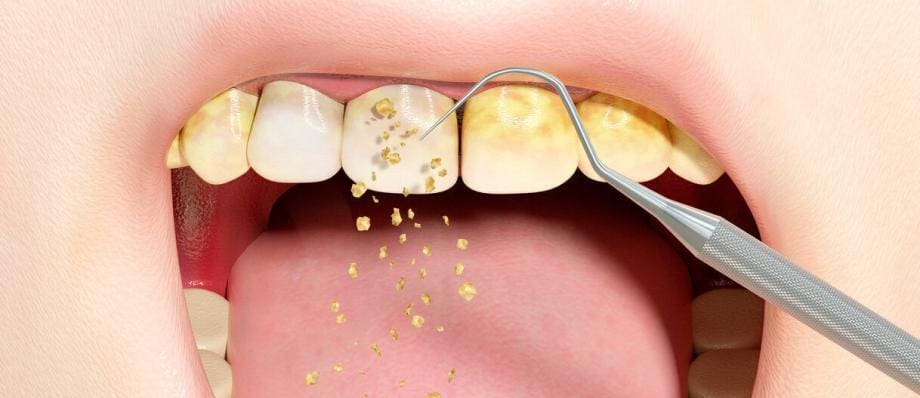Dental plaque is a common oral health issue that affects millions of people worldwide. It is a soft, sticky film of bacteria and other debris that forms on the teeth and gums. If left untreated, dental plaque can lead to various dental problems, including cavities, gum disease, and bad breath. Understanding the causes, prevention, and treatment of dental plaque is crucial for maintaining good oral hygiene and overall health.
What is Dental Plaque?
Dental plaque is a biofilm composed of bacteria, food particles, and saliva that adheres to the surfaces of teeth and oral tissues. It is colorless or pale yellow and accumulates naturally on teeth throughout the day. Plaque is most commonly found near the gumline, the spaces between teeth, and on the chewing surfaces. As plaque forms and matures, it can harden into dental calculus, also known as tartar, making it even more difficult to remove.
Causes of Dental Plaque
The primary cause of dental plaque is the interaction between oral bacteria and carbohydrates present in the foods we consume. The bacteria in the mouth metabolize these carbohydrates, producing acids that attack the tooth enamel, leading to demineralization and the formation of cavities. Regular consumption of sugary and starchy foods can accelerate plaque formation.
Additionally, poor oral hygiene practices play a significant role in the development of dental plaque. Inadequate brushing, flossing, and neglecting regular dental check-ups allow plaque to build up and harden, making it more challenging to remove.
Impact of Dental Plaque on Oral Health
If not properly managed, dental plaque can wreak havoc on oral health, leading to several problems:
- Tooth Decay
- Gum Disease
- Bad Breath
- Dental Calculus
- Tooth Decay
The acids produced by plaque bacteria can erode tooth enamel, causing cavities and dental caries.
Gum Disease
Plaque accumulation near the gumline can irritate the gum tissues, leading to gingivitis, an early stage of gum disease. If left untreated, gingivitis can progress to periodontitis, a more severe form of gum disease that can result in tooth loss.
Bad Breath
The bacteria in plaque release foul-smelling gases, contributing to persistent bad breath or halitosis.
Dental Calculus
If plaque is not regularly removed, it can harden into dental calculus or tartar, which can only be removed by a dental professional.
Prevention of Dental Plaque
Preventing dental plaque is the key to maintaining good oral health. Here are some essential preventive measures:
- Brushing
- Flossing
- Mouthwash
- Balanced Diet
- Regular Dental Check-ups
Brushing
Brush your teeth at least twice a day, preferably after meals, using a fluoride toothpaste and a soft-bristled toothbrush. Brush for at least two minutes, making sure to reach all tooth surfaces, including the gumline.
Flossing
Regular flossing helps remove plaque and food particles between teeth, where a toothbrush cannot reach effectively. Floss at least once a day, using proper flossing techniques.
Mouthwash
Using an antiseptic mouthwash can help reduce bacteria in the mouth, complementing brushing and flossing efforts.
Balanced Diet
Limit sugary and starchy foods in your diet, as these are the primary fuel for plaque-causing bacteria.
Regular Dental Check-ups
Visit your dentist for routine check-ups and professional cleanings every six months or as recommended by your dental professional.
Treatment of Dental Plaque
If dental plaque has already formed and hardened into tartar, it can only be removed by a dental professional during a cleaning session. The dentist or dental hygienist will use special tools to scrape off the tartar from the tooth surfaces and below the gumline.
In cases where plaque has led to tooth decay or gum disease, the appropriate treatments will be required. Tooth decay may necessitate dental fillings or crowns, while gum disease might require more intensive treatments such as scaling and root planing or even periodontal surgery in severe cases.
Additional Tips for Optimal Oral Health
Aside from regular brushing, flossing, and dental check-ups, here are some extra tips for maintaining optimal oral health:
- Use a Fluoride Toothpaste
- Limit Snacking
- Quit Smoking
- Stay Hydrated
- Use a Tongue Scraper
Use a Fluoride Toothpaste
Fluoride helps strengthen tooth enamel and protects against decay. Look for toothpaste with the Seal of Acceptance.
Limit Snacking
Frequent snacking between meals can increase the frequency of acid attacks on teeth. If you do snack, choose tooth-friendly options like fruits, vegetables, or cheese.
Quit Smoking
Tobacco use, including smoking and smokeless tobacco, can significantly increase the risk of gum disease and other oral health problems.
Stay Hydrated
Drinking plenty of water throughout the day helps maintain saliva flow, which helps neutralize acids and wash away food particles and bacteria.
Use a Tongue Scraper
Gently scraping your tongue can help remove bacteria and debris responsible for bad breath.
The Link Between Dental Plaque and Systemic Health
Research has increasingly shown a connection between oral health and systemic health. The bacteria in dental plaque can enter the bloodstream through inflamed gums, and this can potentially contribute to various systemic health conditions. Some of the health issues associated with poor oral hygiene and dental plaque include:
- Cardiovascular Diseases
- Diabetes
- Respiratory Infections
- Pregnancy Complications
- Rheumatoid Arthritis
Cardiovascular Diseases
Studies have suggested a link between gum disease and an increased risk of cardiovascular diseases, including heart attacks and strokes. The inflammation caused by oral bacteria in the bloodstream may contribute to the development of atherosclerosis (hardening of the arteries) and increase the risk of blood clots.
Diabetes
Individuals with diabetes are more susceptible to gum disease, and poorly controlled diabetes can also lead to an increased risk of oral health problems. Conversely, gum disease can make it challenging to control blood sugar levels, creating a bidirectional relationship.
Respiratory Infections
Bacteria from the mouth can be inhaled into the lungs, potentially leading to respiratory infections, especially in individuals with compromised immune systems.
Pregnancy Complications
Pregnant women with gum disease may have a higher risk of preterm birth and low birth weight babies. The inflammation and bacterial presence in the oral cavity could trigger an inflammatory response that affects the developing fetus.
Rheumatoid Arthritis
Emerging research indicates a possible link between gum disease and rheumatoid arthritis, suggesting that oral inflammation might exacerbate joint inflammation in those with arthritis.
Though the associations between dental plaque and systemic health are still being investigated, it is clear that maintaining good oral hygiene and preventing plaque buildup can contribute to better overall health.
Special Considerations for Children and Adolescents
Children and adolescents are especially susceptible to dental plaque and its consequences, primarily due to their dietary habits and sometimes inconsistent oral hygiene practices. Parents and guardians play a crucial role in ensuring proper dental care for their children.
- Supervision and Assistance
- Fluoride Use
- Regular Dental Check-ups
- Orthodontic Considerations
Supervision and Assistance
Children under the age of six may require adult supervision and assistance while brushing their teeth to ensure they clean their teeth thoroughly.
Fluoride Use
Children can benefit from fluoride toothpaste to strengthen their developing teeth. However, it is essential to use an appropriate amount and to ensure they do not swallow toothpaste.
Regular Dental Check-ups
Regular visits to the dentist are vital for monitoring dental development, providing preventive treatments like sealants, and reinforcing proper oral care habits.
Orthodontic Considerations
Adolescents undergoing orthodontic treatment, such as braces, should be especially diligent in their oral hygiene routine, as braces can create additional areas where plaque can accumulate.
Cutting-Edge Technologies and Techniques in Plaque Management
Advancements in dentistry have led to innovative technologies and techniques for managing dental plaque more effectively. Some of these include:
- Digital Imaging
- Laser Therapy
- Ultrasonic Scalers
- Chemical Plaque Control
Digital Imaging
Intraoral cameras and digital X-rays allow dentists to detect plaque, cavities, and gum disease with higher precision, enabling earlier intervention and more targeted treatments.
Laser Therapy
Lasers are increasingly used in periodontal treatments to target and eliminate bacteria associated with plaque and gum disease while promoting gum tissue healing.
Ultrasonic Scalers
These devices use ultrasonic vibrations to break down tartar and plaque, making it easier for dental professionals to remove them during cleanings.
Chemical Plaque Control
Some mouthwashes and toothpaste contain specific antimicrobial agents to target and reduce the bacterial load in the mouth.
How to remove dental plaque from teeth?
To effectively remove dental plaque, a combination of good oral hygiene practices and professional dental cleanings is essential. Here’s a step-by-step guide on how to remove dental plaque:
- Brushing
- Flossing
- Mouthwash
- Professional Dental Cleaning
- Interdental Cleaning Aids
- Electric Toothbrushes
- Be Mindful of Diet
- Stop Smoking
Brushing
- Use a soft-bristled toothbrush and fluoride toothpaste.
- Brush at least twice a day, ideally after meals and before bedtime.
- Brush for at least two minutes to ensure thorough cleaning.
- Angle the bristles at a 45-degree angle towards the gumline.
- Use gentle, circular motions to clean all tooth surfaces, including the front, back, and chewing surfaces.
- Don’t forget to brush the tongue to remove bacteria and freshen breath.
Flossing
- Floss at least once a day, preferably before brushing.
- Take about 18 inches of dental floss and wind it around your middle fingers.
- Hold the floss tightly between your thumbs and forefingers, leaving about 1-2 inches of floss to work with.
- Gently guide the floss between the teeth, avoiding snapping it against the gums.
- Curve the floss around each tooth and slide it up and down, reaching just below the gumline.
- Use a clean section of floss for each tooth to avoid spreading plaque.
Mouthwash
- After brushing and flossing, rinse with an antiseptic mouthwash.
- Swish the mouthwash around your mouth for about 30 seconds.
- Spit out the mouthwash and avoid eating or drinking for at least 30 minutes afterward.
Professional Dental Cleaning
- Even with excellent oral hygiene practices, some plaque can still accumulate and harden into tartar. Regular dental check-ups and professional cleanings are crucial for its removal.
- Visit your dentist or dental hygienist for a check-up and cleaning every six months or as recommended based on your oral health needs.
- During the cleaning, the dental professional will use specialized instruments to scrape off plaque and tartar from your teeth and gumline.
Interdental Cleaning Aids
- In addition to flossing, consider using interdental brushes or soft picks to clean between teeth and around dental work like braces or bridges.
- These aids can be particularly helpful for people who find traditional flossing challenging.
Electric Toothbrushes
- Electric toothbrushes with oscillating or rotating bristle heads have been shown to be more effective at plaque removal than manual toothbrushes.
- If you struggle with manual brushing, an electric toothbrush may be a helpful tool.
Be Mindful of Diet
- Reduce sugary and starchy food consumption, as these provide fuel for plaque-causing bacteria.
- Choose tooth-friendly snacks like fruits, vegetables, cheese, or nuts.
Stop Smoking
- Smoking can contribute to the development of dental plaque and gum disease. Quitting smoking can significantly improve oral health.
Conclusion
Dental plaque is a pervasive oral health concern that can lead to serious dental problems if not appropriately managed. Understanding the causes, prevention, and treatment of dental plaque is essential for maintaining good oral hygiene and overall health. Regular brushing, flossing, and dental check-ups are crucial for preventing plaque formation and its associated issues.
Furthermore, the links between dental plaque and systemic health highlight the importance of oral health as an integral component of overall well-being. By adopting a comprehensive approach to oral care and staying up-to-date with the latest advancements in dentistry, individuals can enjoy healthier smiles and improve their overall quality of life.
Remember, a proactive approach to dental health can significantly reduce the impact of dental plaque, leading to stronger teeth, healthier gums, and a more confident smile. Make dental care a priority, and work closely with your dentist to develop a personalized oral hygiene plan that fits your unique needs and circumstances. With consistent efforts and professional support, you can keep dental plaque at bay and maintain a lifetime of excellent oral health.Regular and consistent oral hygiene practices are crucial for removing dental plaque and preventing its buildup. By brushing, flossing, using mouthwash, and attending regular dental check-ups, you can maintain excellent oral hygiene and reduce the risk of dental problems associated with plaque. If you notice any signs of gum disease or other oral health issues, consult your dentist promptly for appropriate treatment and guidance. Remember that prevention is the best approach to dental plaque management, leading to a healthier, brighter smile and improved overall well-being.





